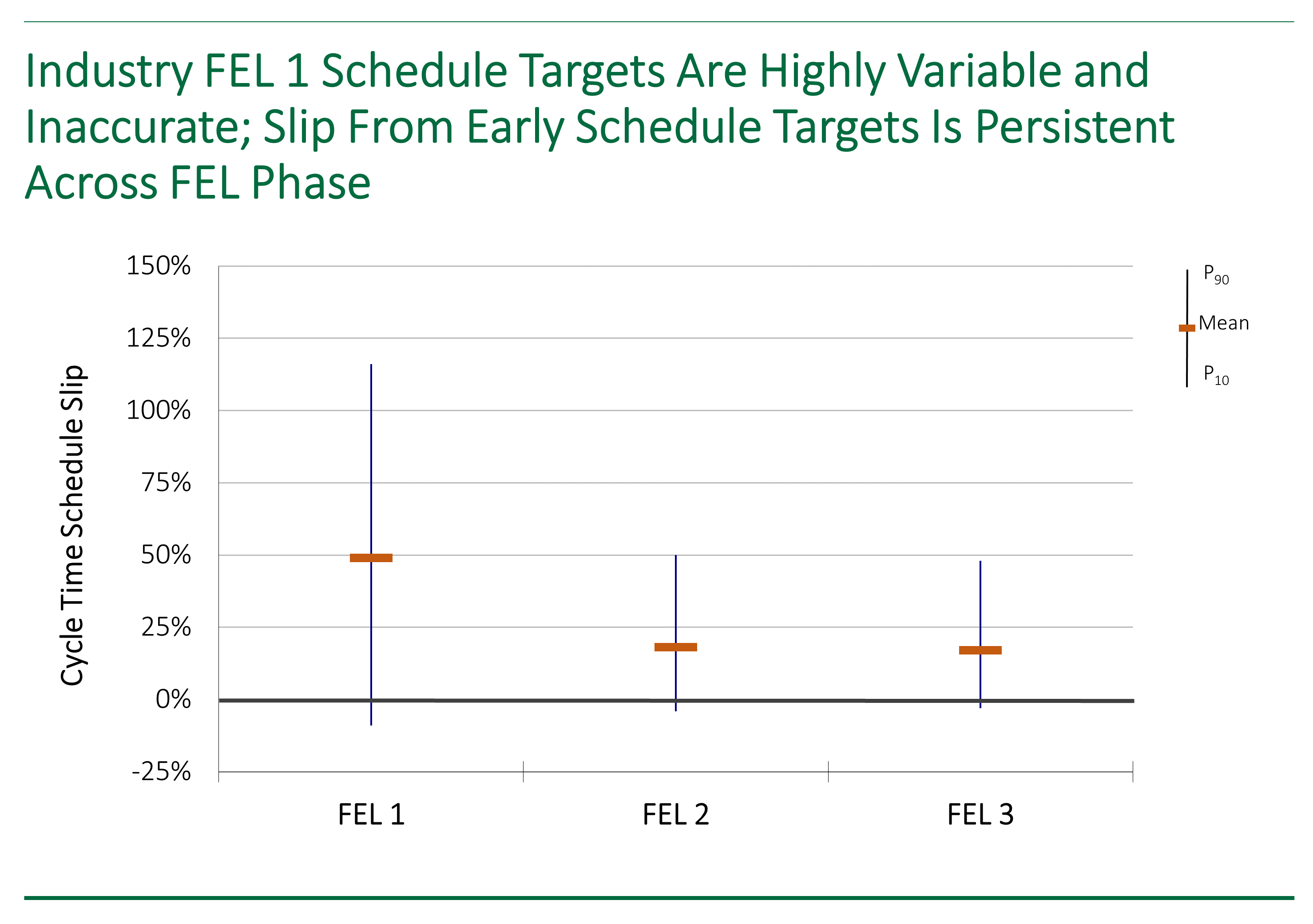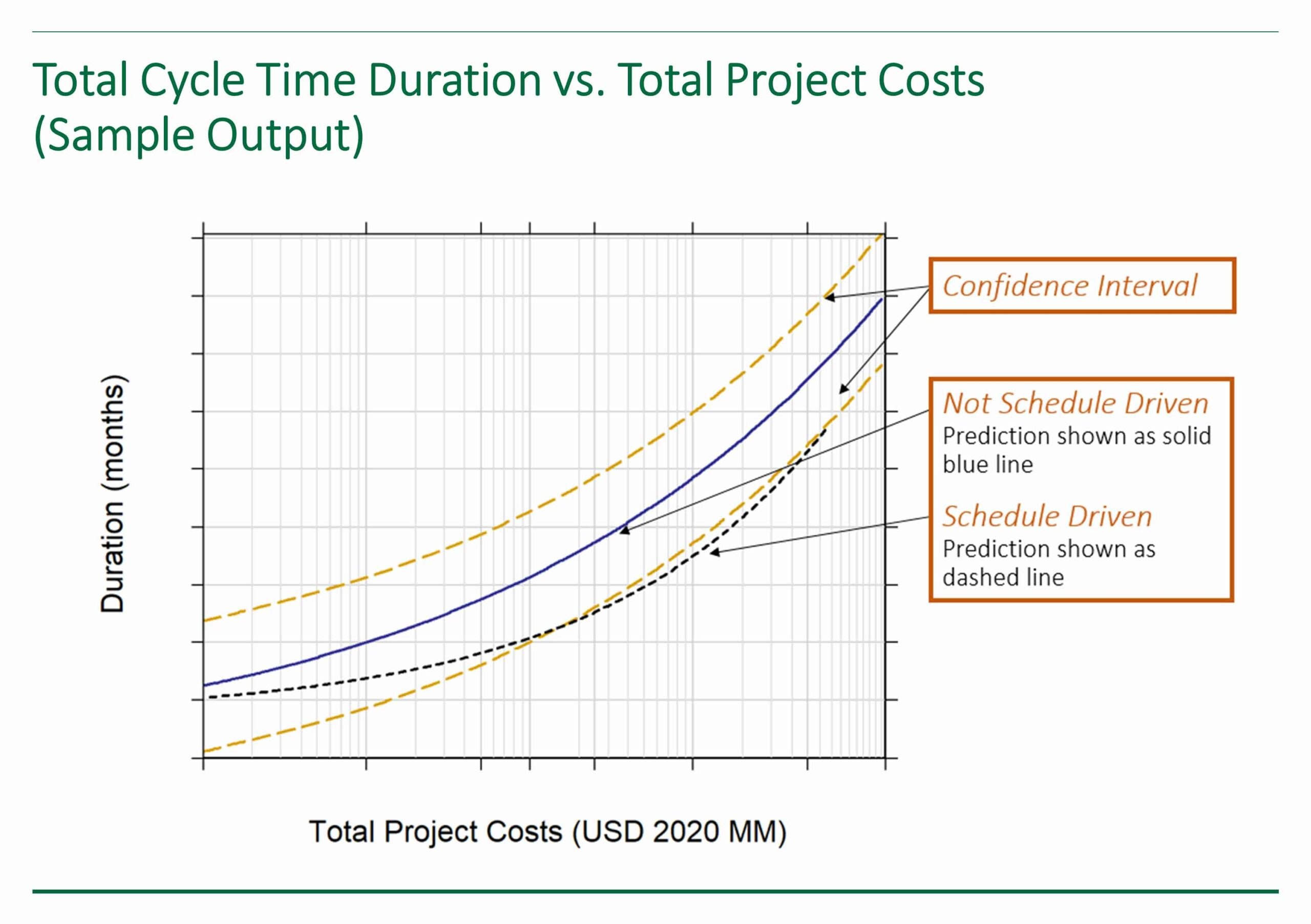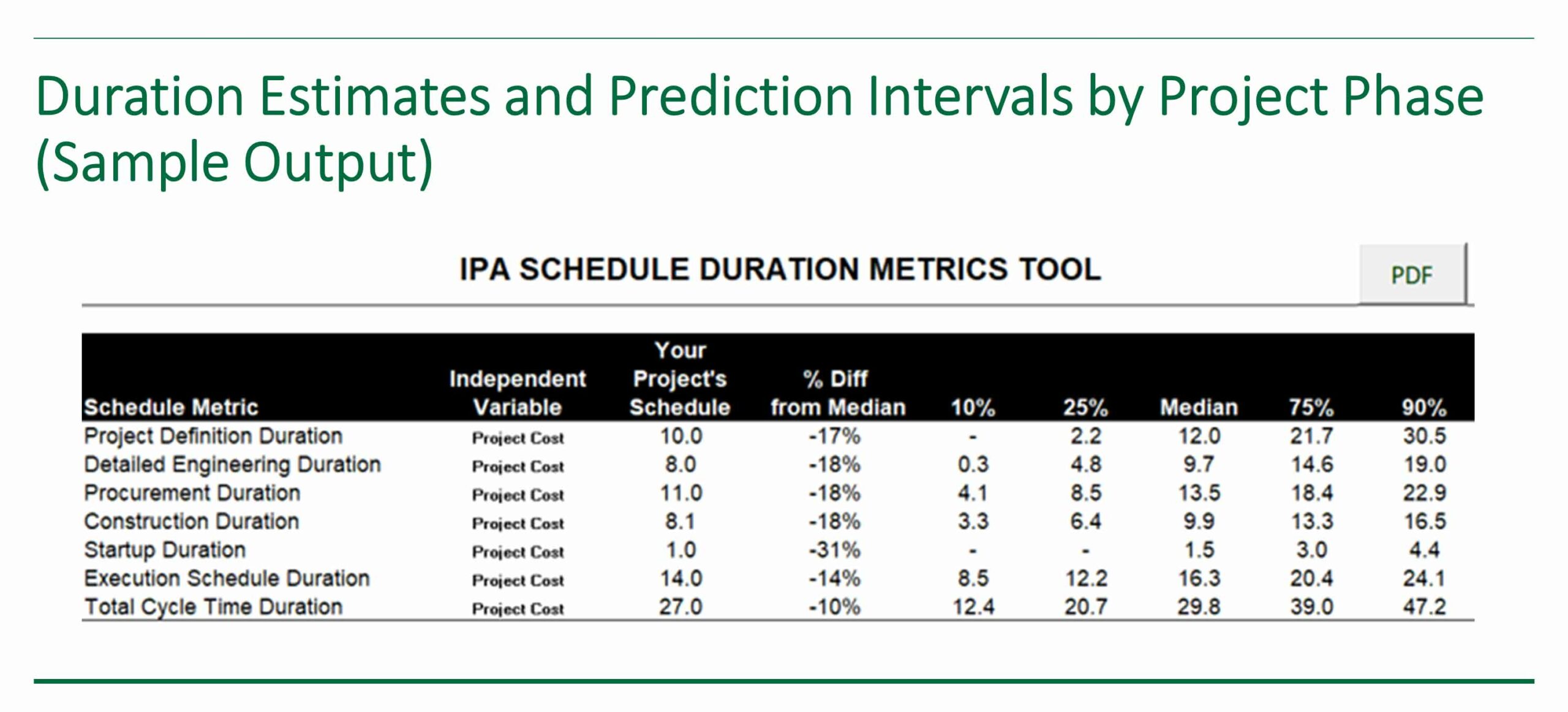IPA’s Conceptual Schedule Duration Tool
Generate Accurate Schedule Targets Based on Key Project Characteristics
The capital projects industry has struggled to generate accurate project schedule targets. In looking out across IPA’s database of projects, we see that irrespective of their development phase, projects tend to experience schedule slip and have much less predictable schedule outcomes than the expectations set at each of the major development decision gates. This is especially true for early schedule estimates for which the average slip of the targets set at FEL 1 is 50 percent. The 80 percent range (within which 80 percent of the data fall) for these estimates is over 120 percent. The performance improves in subsequent phases, but even our most detailed estimates (FEL 3) are off by 17 percent, on average. The fact is, schedule target accuracy is far less certain than advertised. The figure below, based on a recent sample of over 2,000 projects, illustrates the situation.

The challenge most owner organizations face is access to real and reliable capital project data to build a conceptual schedule. To know how long a project takes, particularly in advance of the conceptual design and FEED, requires having a sufficient sample of analogous projects. Further, a heavy amount of normalization is necessary to put comparison projects on the same basis (e.g., control for time, project size and complexity, location, etc.).
To help owners in this regard, IPA has tapped into its extensive proprietary database of completed projects and built a tool kit that reliably estimates project schedule durations based on a variety of inputs, e.g., industry, size, scope characterization, and project location.
Dozens of capital projects industry leaders—companies representing the energy, chemicals, refining, pharmaceuticals, and other sectors—have trusted IPA’s conceptual schedule estimating toolkit to prepare reliable project schedule estimates for decision makers. The toolkit is updated annually with a new tranche of schedule data from recent projects IPA has evaluated, ensuring that users are getting the latest schedule information from actual projects.
The schedule duration toolkit works by using a machine learning technique called regression. Using the actual durations from our sample of projects, the regression approach quantifies the relationships between the project characteristics and project duration. These relationships provide the basis for the prediction. A sample output for the relationship between project cycle time (duration between the start of FEL 2 [scoping] and startup) and project capital cost is shown below.

In addition to total project duration, the toolkit provides duration estimates and prediction intervals for each of the major capital project phases: FEL Duration, Detailed Engineering Duration, Procurement Duration, Construction Duration, and Startup.

This tool can be used in many different ways. Today, some owners use the tool to set schedule duration targets for early estimates. In fact, several users have told IPA that in their own internal studies of performance, the IPA Conceptual Schedule Duration Tool has consistently outperformed the project team in early estimates. Across the thousands of projects this tool has been tested on, the average difference between the actual and forecasted schedule durations generated by the tool is zero. In other words, the tool is highly accurate.
Beyond conceptual targets, many owner organizations continue to use the tool to validate the detailed schedules generated in FEL 2 and FEL 3. Given the industry-wide systemic optimism in schedules, the results from the tool have been instrumental to these owners in ensuring the targets are reasonable.
Please contact us for more information on how the Conceptual Schedule Duration Tool can help your organization.